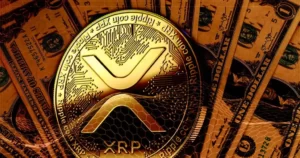XRP, the native cryptocurrency of the Ripple network, has been on fire in the last 24 hours, surging to claim the top-performing spot among major cryptos, while Bitcoin (BTC) and Ether (ETH) held steady.
Prices soared by over 13% before a slight pullback on Monday, with trading volumes hitting $2 billion, up from Sunday’s $1 billion. As of now, XRP is trading at 73 cents and has climbed to become the fourth-largest token by market capitalization, surpassing BNB.
The reasons for XRP’s recent surge are not entirely clear, but there are a few possible explanations. One possibility is that investors are bullish on the Ripple network’s potential to revolutionize cross-border payments. Ripple is already working with a number of major financial institutions, and its On-Demand Liquidity (ODL) service is being used to facilitate fast and low-cost cross-border payments.
Another possibility is that investors are buying XRP in anticipation of a positive outcome to Ripple’s ongoing legal battle with the US Securities and Exchange Commission (SEC). The SEC is alleging that Ripple sold XRP as an unregistered security. However, many XRP supporters believe that the SEC’s case is weak and that Ripple will ultimately prevail in court.
Whatever the reasons for its recent surge, XRP is now one of the hottest cryptocurrencies on the market. It remains to be seen whether XRP can maintain its momentum in the long term, but its recent success is a sign that investors are increasingly interested in the Ripple network and its potential.
XRP’s Potential to Revolutionize Cross-Border Payments
The Ripple network is a global payment network that enables fast and low-cost international transactions. Ripple’s On-Demand Liquidity (ODL) service is particularly popular among businesses, as it allows them to send and receive payments across borders in real-time without having to hold any foreign currency reserves.
ODL works by using XRP as a bridge currency. When a business wants to send a payment to another business in a different country, Ripple converts the sender’s fiat currency into XRP. The XRP is then transferred to the recipient’s account, where it is converted back into the recipient’s fiat currency.
ODL is a much faster and cheaper way to send international payments than traditional methods, such as wire transfers. Wire transfers can take several days to complete and can incur high fees. In contrast, ODL payments can be completed in seconds and typically only cost a few cents.
Related: The potential of Ripple and XRP to disrupt the financial industry
XRP’s Ongoing Legal Battle with the SEC
In December 2020, the SEC filed a lawsuit against Ripple, alleging that the company had sold XRP as an unregistered security. The SEC is seeking to have XRP declared a security, which would subject it to stricter regulations.
Ripple has denied the SEC’s allegations and has vowed to fight the lawsuit in court. The company argues that XRP is a utility token and not a security. Utility tokens are tokens that are used to access a product or service, such as XRP, which is used to power the Ripple network.
The SEC’s lawsuit against Ripple is still ongoing, and it is unclear when it will be resolved. However, the outcome of the lawsuit could have a significant impact on the price of XRP and the future of the Ripple network.
Conclusion
XRP is on fire at the moment, and it remains to be seen whether it can maintain its momentum in the long term. However, the recent surge in XRP’s price is a sign that investors are increasingly interested in the Ripple network and its potential to revolutionize cross-border payments.



